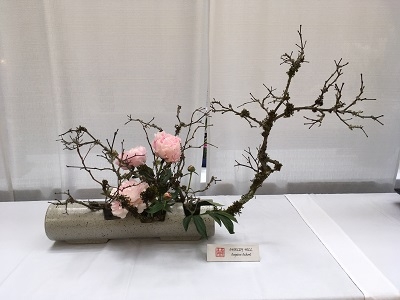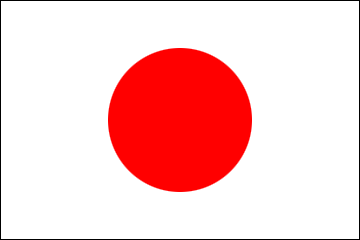Through the Eyes of the former Consul General Yamada (June, 2017 - July, 2020)
2019/8/13

60th Anniversary of Ikebana International, Seattle Chapter
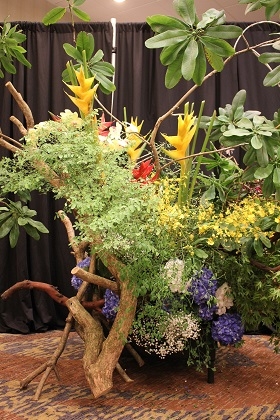
Ikebana International Seattle Chapter 19 welcomed its 60th anniversary this year. On June 1, a celebration was held at a hotel in Bellevue showcasing flower arrangements by Chapter members and a demonstration by Sogetsu Master Koka Fukushima, who came from Japan for the occasion. I received an invitation to attend the event and was able to enjoy the beautiful pieces of art.
The photographs are of some of the members’ displays. In addition to bringing out the beauty of flowers in accordance with Japanese traditions, you can feel the influence of American ideas and thoughts.
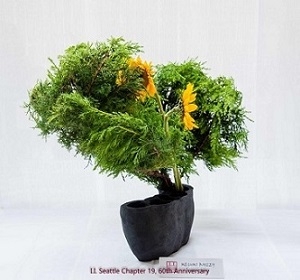
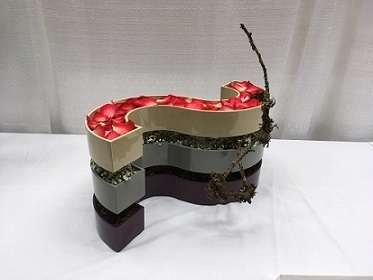
Ikebana International was established in Tokyo in 1956. The founder was Ellen Gordon Allen, wife of U.S. Major General Frank Albert Allen Jr. who was stationed in Tokyo from 1951 to 1952. It was an era when the scars of the war were seen everywhere in town; the U.S. military stationed in Japan had just changed its status from “Occupation Army” to “Stationed in Japan” after the 1951 San Francisco Peace Treaty. Ellen Gordon Allen loved Japanese flower arrangement. She established an umbrella organization for Ikebana where lovers of the art from various schools could gather under the motto, “Friendship through flowers.” Ikebana International currently has more than 160 branches in over 50 countries around the world, and has about 8,000 members.

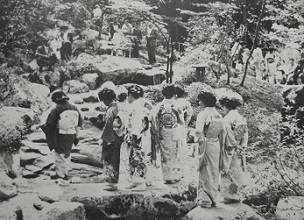
Left Picture: Construction of Seattle Japanese Garden (1960)
Right Picture: Women in Kimono at Seattle Japanese Garden Opening (1960)
Images courtesy of the Seattle Japanese Garden
Right Picture: Women in Kimono at Seattle Japanese Garden Opening (1960)
Images courtesy of the Seattle Japanese Garden
The few years surrounding 1959, when the Seattle chapter was established, were a time when friendly ties between Japan and the U.S. were strengthened in several important ways in Washington State. In 1957, the first Washington-Japanese sister city relationship was created between Seattle and Kobe, followed by one between Tacoma and Kitakyushu in 1959. Around the same time, a plan was in development for a Seattle Japanese garden, the landscape being designed by Japanese experts on gardening, Kiyoshi Inoshita and Juki Iida. His Imperial Highness Prince Akihito and Princess Michiko (at the time) visited the Seattle area in 1960, a year after their marriage, and planted a cherry blossom tree in the newly created garden. Forty years later, four graft shoots were made from the cherry tree; one of them is growing in the garden of the Consulate’s Official Residence.
Critics say that the biggest difference between ikebana and western-style flower arrangement is that the former seeks the beauty of harmony through asymmetry. In the western style, flowers are often inserted into vases so that they look almost symmetrical when viewed from the front, back, left, and right, but in the case of ikebana, the arranged flowers present different figures and silhouettes depending on from which side you view them.
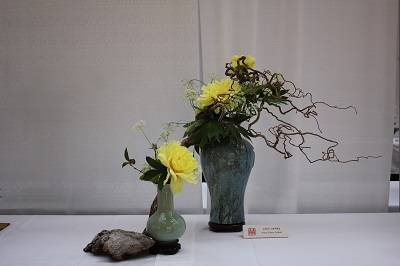
Spectators sighed in awe as Master Fukushima created arrangements one after another in front of them. It is a distinct feature of the Sogetsu school that its teachers stand behind the vase and show the spectators the process of flower arrangement from a blind angle. It is as if a hair stylist cuts hair from behind the customer without looking at the mirror in front. Therefore, extreme care must be taken to not cut off the flowers (or in a hairstylist’s case, the nose; the nose and flowers are both “hana” in Japanese!). When I thought the last large piece was completed, Master Fukushima handed me and my son a flower each and asked us to finish it. If we insert them in strange places, we might ruin its artistic impression. My son immediately inserted it without worry, but after some hesitation of my own, I meekly picked a place. I did not dare to ask what the master thought about my finishing touch.
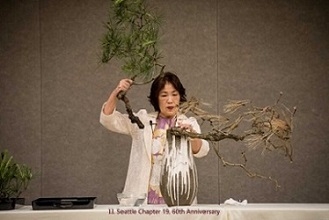
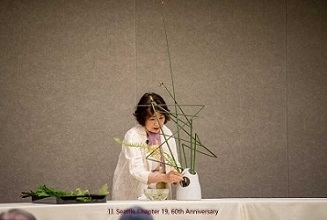
Master Fukushima
Some flower lovers gather and enjoy their craft together. Others plant a cherry blossom tree and bring flowers to the next generation. By accumulating these small acts and gestures, cross-border friendship and trust are born among people who do not speak the same language, and peace and culture are nurtured. Besides, flowers convey your heart on significant occasions such as birthdays, Mother’s Day, when visiting those who are ill, and visits to the grave. I’ll end with an old Japanese poem, “Of people, one cannot know their hearts; But in my home of old, the blossom, with its ancient scent, perfumes the air (Hito wa isa; kokoro mo shirazu; furusato wa; hana zo mukashi no; ka ni nihohikeru.)” (Ki no Tsurayuki)
